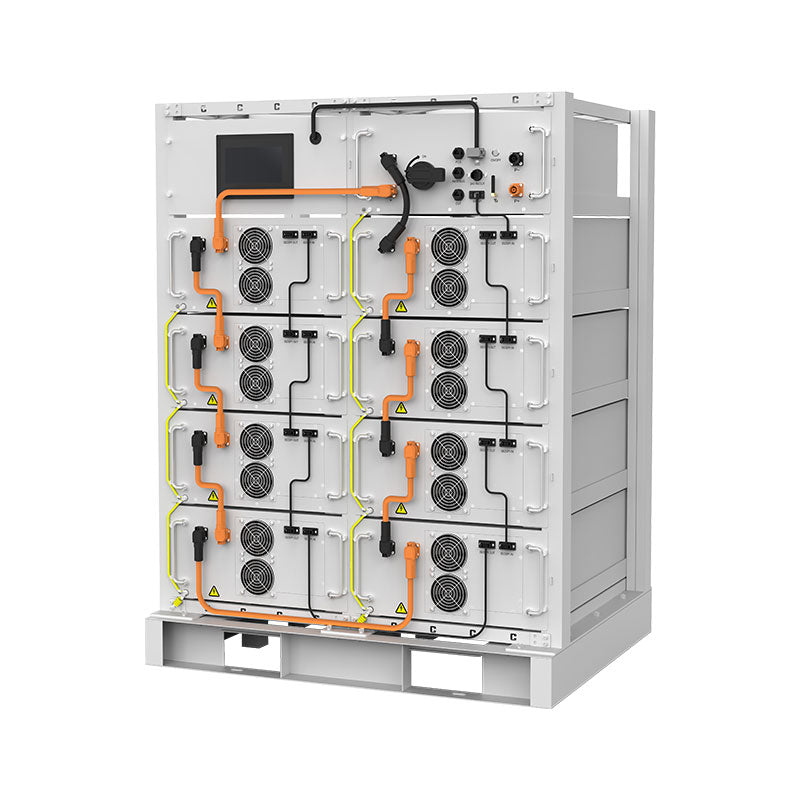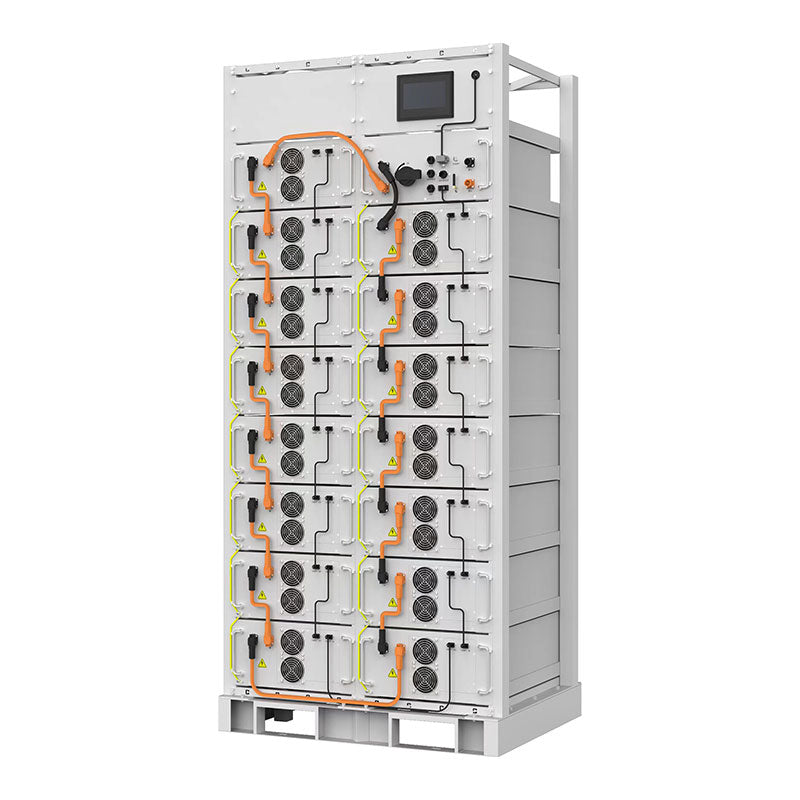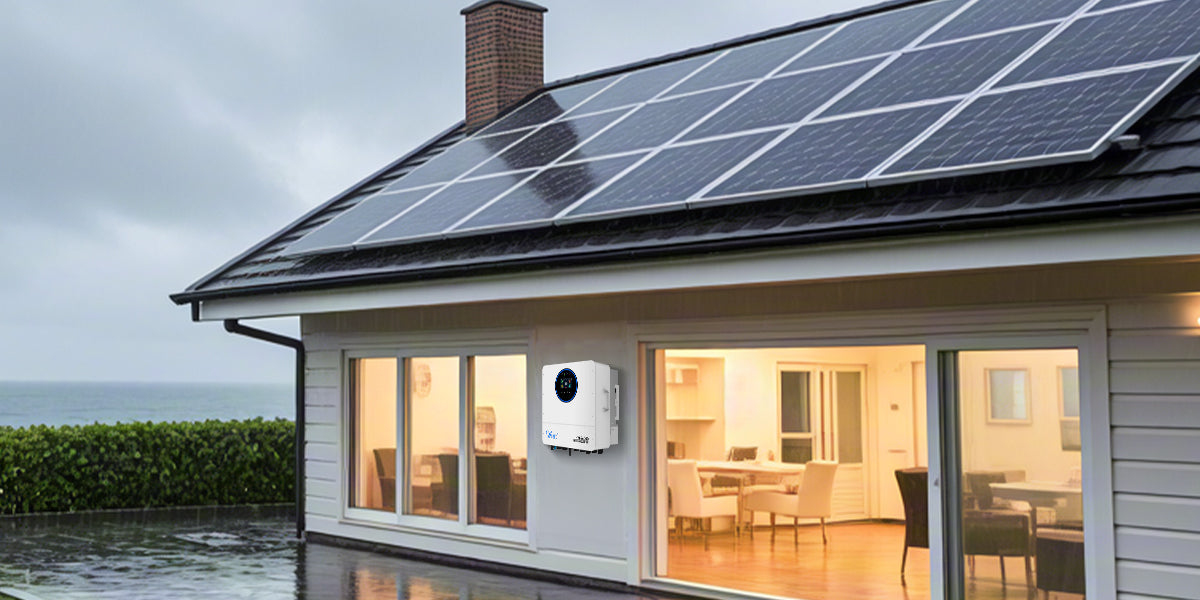Understanding the Heart of Your Power System
Modern off-grid inverters, often called multi-mode inverters, are the heart and brains of any standalone power system. These powerful battery inverters are capable of supplying pure sine wave AC power to all loads and appliances under any condition. Unlike simple inverters, they also contain powerful built-in chargers, which is why they are frequently referred to as inverter-chargers. Their primary role is to convert the DC electricity generated by solar panels into usable AC electricity for your home, but their capabilities go much further. They manage multiple power sources simultaneously—including solar, a backup generator, and even grid power in hybrid setups.
A crucial factor to consider is the inverter's ability to handle high surge loads from demanding appliances like pumps, compressors, and air-conditioning units. Many cheaper inverters cannot manage these high continuous or surge demands, leading to system trips or premature failure. Furthermore, choosing a pure sine wave inverter is highly recommended over a modified sine wave model, as it provides cleaner, higher-quality power that can reliably run all kinds of sensitive electronics, including computers and medical equipment.
This review focuses on the leading off-grid inverters available, selected based on reliability, service, power ratings (continuous and peak), energy management software, AC source control, flexibility, and remote monitoring capabilities.
Top Off-Grid Inverters Reviewed
1. Selectronic SP PRO (Australia)
The SP PRO series from Australian manufacturer Selectronic is a top-tier choice, particularly for those who prioritize robust performance and advanced energy management. Thanks to a heavy-duty toroidal core transformer, these inverters boast an exceptional 30-minute power rating and an impressive 2.5x peak surge power rating. While they come at a premium price, their quality, high surge ratings, and advanced monitoring features make them one of the best energy storage inverters available. They feature extensive control methods for load and generator management and are backed by a reputation for longevity, with many installations operating for over two decades.
The SP PRO is an advanced battery inverter-charger that shines when it comes to energy management, driven by sophisticated software. It can be configured for grid-connected backup, hybrid solar storage, or fully off-grid systems.
Key Features:
- Extremely high surge power output (2.5x continuous rating).
- Powerful software package with advanced remote access and monitoring (requires optional Select.live unit).
- Managed AC-coupling with compatible FIMER and Fronius solar inverters.
- Battery sense monitoring and mid-string sensor for precise charging.
- High pass-through power rating of 63A (15kW).
- Compatible with a wide range of lead-acid and lithium battery systems.
Disadvantages:
- Higher price point compared to competitors.
- Requires an additional unit for remote monitoring and a contactor for dual AC sources.
2. Victron Energy MultiPlus-II (Netherlands)
Victron Energy is a globally recognized manufacturer known for high-quality and cost-effective power solutions. The MultiPlus-II is a versatile inverter-charger that is more than just an inverter; it's a low-frequency inverter, battery charger, and grounding relay combined in one unit. It is a popular choice for its reliability, extensive product range from 800W up to 15,000W, and advanced remote monitoring via the Victron VRM portal. The transformer-based system gives it the ability to handle surge power demands well above its continuous rating, making it suitable for starting heavy loads like air conditioners and pumps.
Key Features:
- Cost-effective and highly versatile inverter-charger.
- Excellent remote monitoring and control capabilities.
- PowerAssist feature boosts output by drawing power from the batteries to prevent overloading a limited AC source like a generator.
- Can be configured for single-phase, split-phase, or three-phase systems.
- Dual AC outputs for separating essential and non-essential loads.
Disadvantages:
- Inverters are sized in kVA, not kW, which can be confusing (a 5000VA unit is roughly 4000W).
- Achieves full capability when used within the Victron ecosystem (e.g., with a Cerbo GX for control).
3. Outback Power Radian Series (USA)
Founded in 2001, Outback Power is a leader in North American off-grid power systems. The Radian series is a transformer-based, bi-directional inverter-charger designed for both advanced hybrid and off-grid applications. A key advantage is its ability to create true separation between the grid and the home, offering protection from grid surges. The Radian can be stacked with up to ten units in parallel for large systems and works seamlessly with generators for backup charging.
Key Features:
- High surge power output (2x continuous rating) for starting large loads.
- Dual AC inputs for grid and generator connections.
- Split-phase models available for 120/240VAC output from a single unit.
- Scalable, with up to 10 units in parallel for up to 80kW of power.
- Pairs with any 48V battery, offering system flexibility.
Disadvantages:
- Like Victron, inverters are sized in kVA, not kW.
- Requires the MATE3s remote for full programming and monitoring.
- Not designed for mobile applications, which would void the warranty.
4. SMA Sunny Island (Germany)
SMA Solar Technology is a leading German solar equipment supplier with a strong reputation for quality. The Sunny Island inverter-charger is a proven performer, particularly noted for its durability in harsh environments, including sub-zero temperatures. It is one of the few inverters with an IP54 weather rating, allowing installation in semi-exposed locations. Its OptiCool technology ensures reliable operation and overload capacity across a wide temperature range, while the intelligent OptiBat system helps extend the life of connected batteries.
Key Features:
- Excellent durability and IP54 weather rating.
- High surge power output and pass-through capability.
- Intelligent load and energy management system (OptiPower).
- Can be used for systems from 3kW to 300kW.
- AC and DC coupling capability.
Disadvantages:
- Requires an external transfer switch for battery backup in hybrid systems.
- Backup mode activation has a 2-3 second delay in hybrid configurations.
- Some users note it has only one AC input, for either a grid or a generator but not both simultaneously.
5. Schneider Electric XW Pro (France)
Schneider Electric, a major European corporation, offers the Conext XW Pro, a high-quality hybrid inverter-charger built on a reliable and time-tested platform. It is designed to be adaptable for off-grid, backup power, and self-consumption applications, from single homes to remote communities. The XW Pro is a heavy, transformer-based inverter designed first and foremost for off-grid use, giving it a powerful surge capacity capable of handling 12kW for a full minute.
Key Features:
- Very high surge and pass-through power capabilities.
- Scalable system that allows for integrating solar capacity as needed.
- Dual AC inputs for both grid and generator.
- AC/DC coupling capable for system design flexibility.
- Can be configured in clusters up to 36kW.
Disadvantages:
- Software can be quirky, with some settings interacting in poorly documented ways.
- Does not have an integrated battery state of charge (SOC) monitoring system.
- Can be complex to configure for certain hybrid self-use installations.
All-in-One & Transformerless Inverters
In recent years, all-in-one inverters have gained popularity. These units integrate the inverter, solar charge controller (MPPT), and monitoring into a single package, often at an affordable price. However, most are built on a transformerless architecture, which typically limits their surge power output compared to the heavy-duty transformer-based models listed above.
6. Sol-Ark 12K & 15K (USA/China)
Sol-Ark is a US-based company that distributes a feature-packed all-in-one hybrid inverter manufactured by Deye, customized for the US market. The Sol-Ark 15K is often described as a comprehensive energy management system, providing 15kW of continuous power and integrating seamlessly with solar, batteries, and the grid. Its pre-wired design can reduce installation costs, and it boasts a very fast 16ms transfer time, making power outages imperceptible. The 200A pass-through capability means a subpanel is often not needed for whole-home backup.
Key Features:
- All-in-one unit with integrated dual MPPTs.
- Very high pass-through power rating (200A on the 15K model).
- Fast transfer time for seamless backup.
- Split-phase 120/240VAC output.
- Generator auto-start and extensive monitoring built-in.
Disadvantages:
- As a transformerless inverter, it has a limited surge rating compared to transformer-based units.
- Output power is split between each phase, which can limit performance with unbalanced loads.
7. Deye SUN Inverters (China)
Deye manufactures a range of affordable hybrid and off-grid inverters. Like the Sol-Ark models they produce, Deye's own branded inverters are transformerless, which is a key consideration for surge capacity. However, they offer a very compelling feature set for their price, including dual MPPTs, a color touchscreen, and parallel capability. For smaller-scale off-grid installations, they can be a suitable and economical choice.
Key Features:
- Affordable, all-in-one hybrid inverter.
- Integrated dual MPPTs with high PV input capacity.
- Generator auto-start and monitoring built-in.
- Parallel configuration for higher power output.
- Unique "Smart Load" application and grid peak shaving function.
Disadvantages:
- Limited surge power rating due to transformerless design.
- The user interface and remote monitoring software can be challenging to set up and navigate.






Leave a comment
All comments are moderated before being published.
This site is protected by hCaptcha and the hCaptcha Privacy Policy and Terms of Service apply.